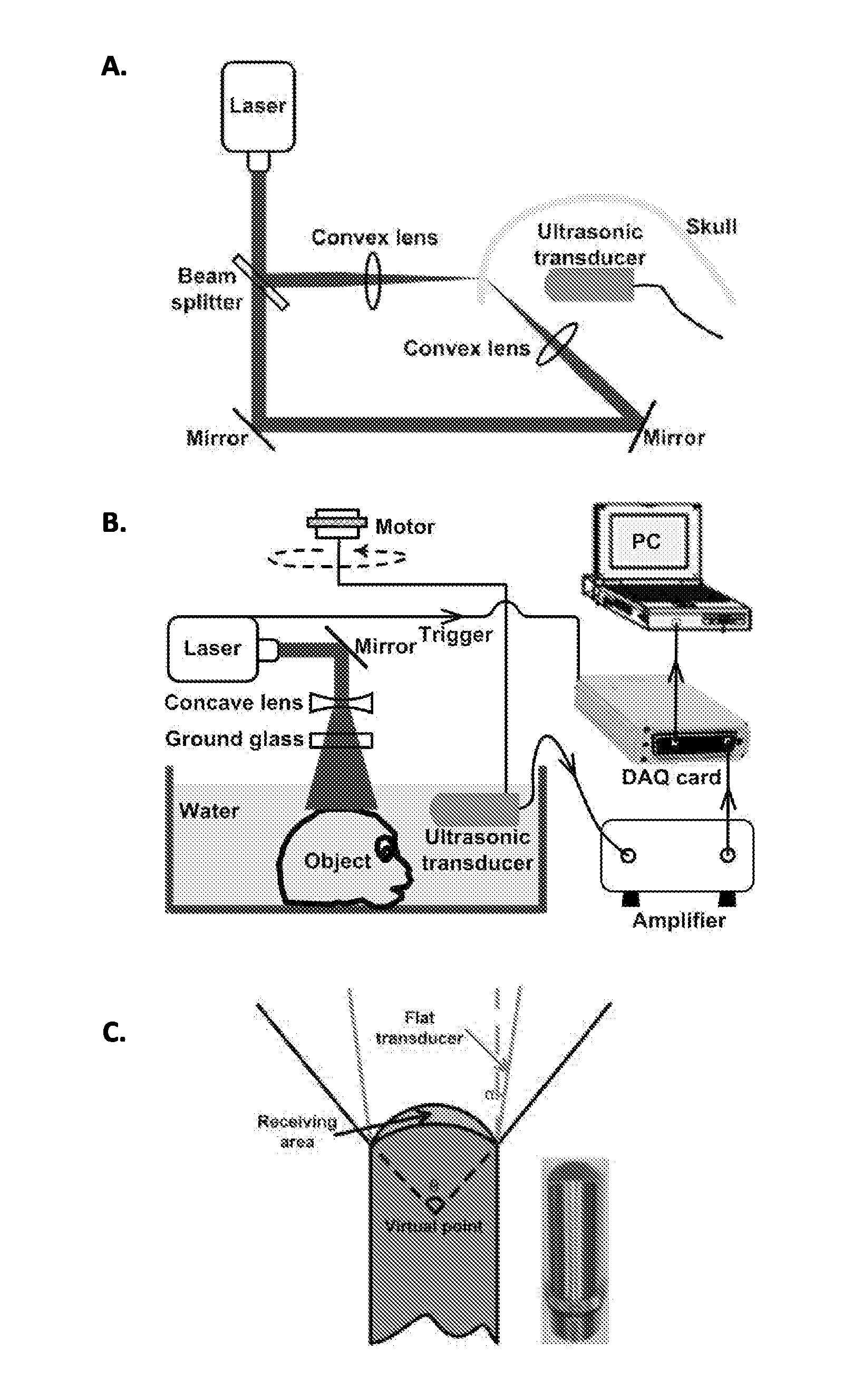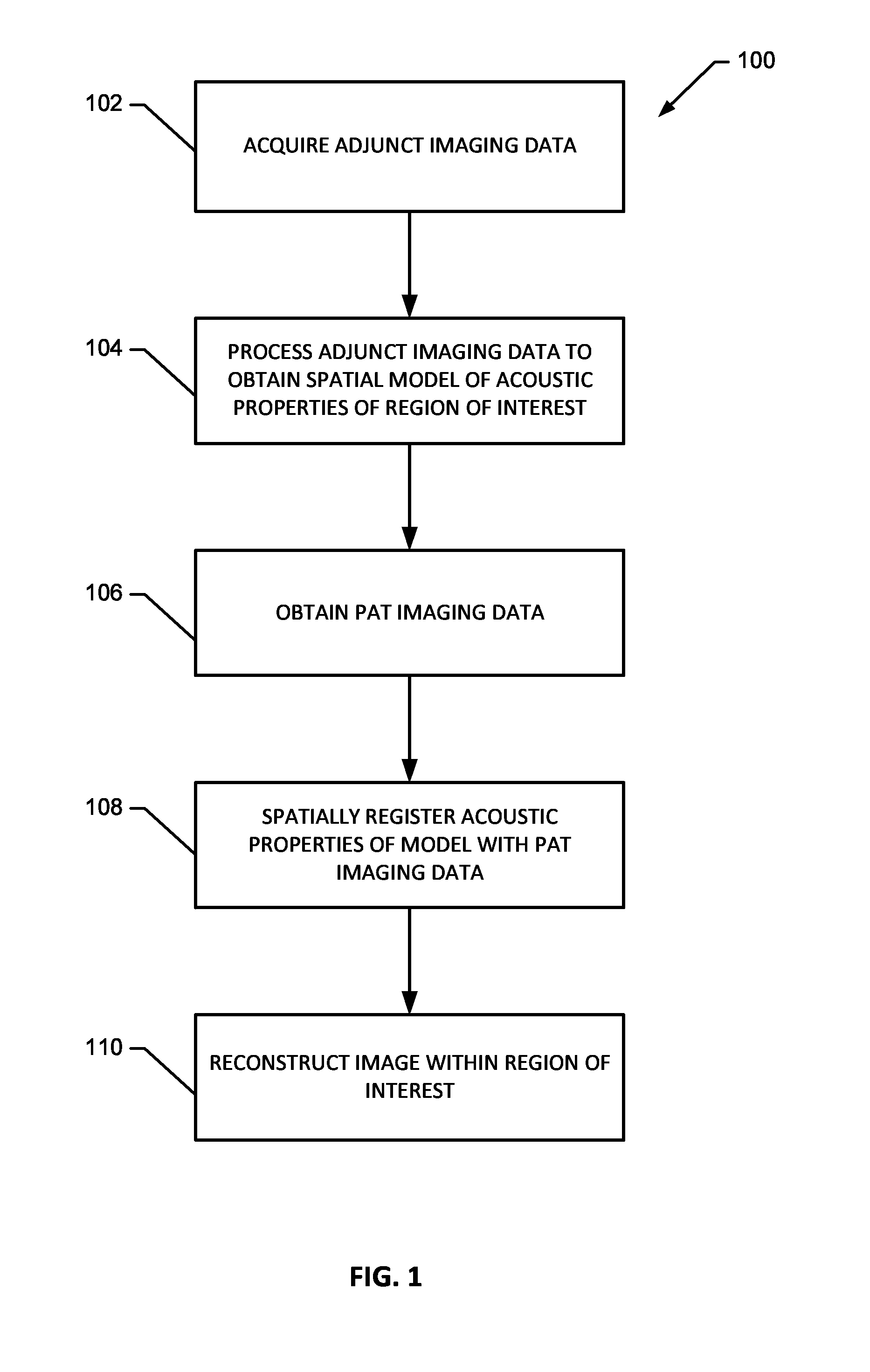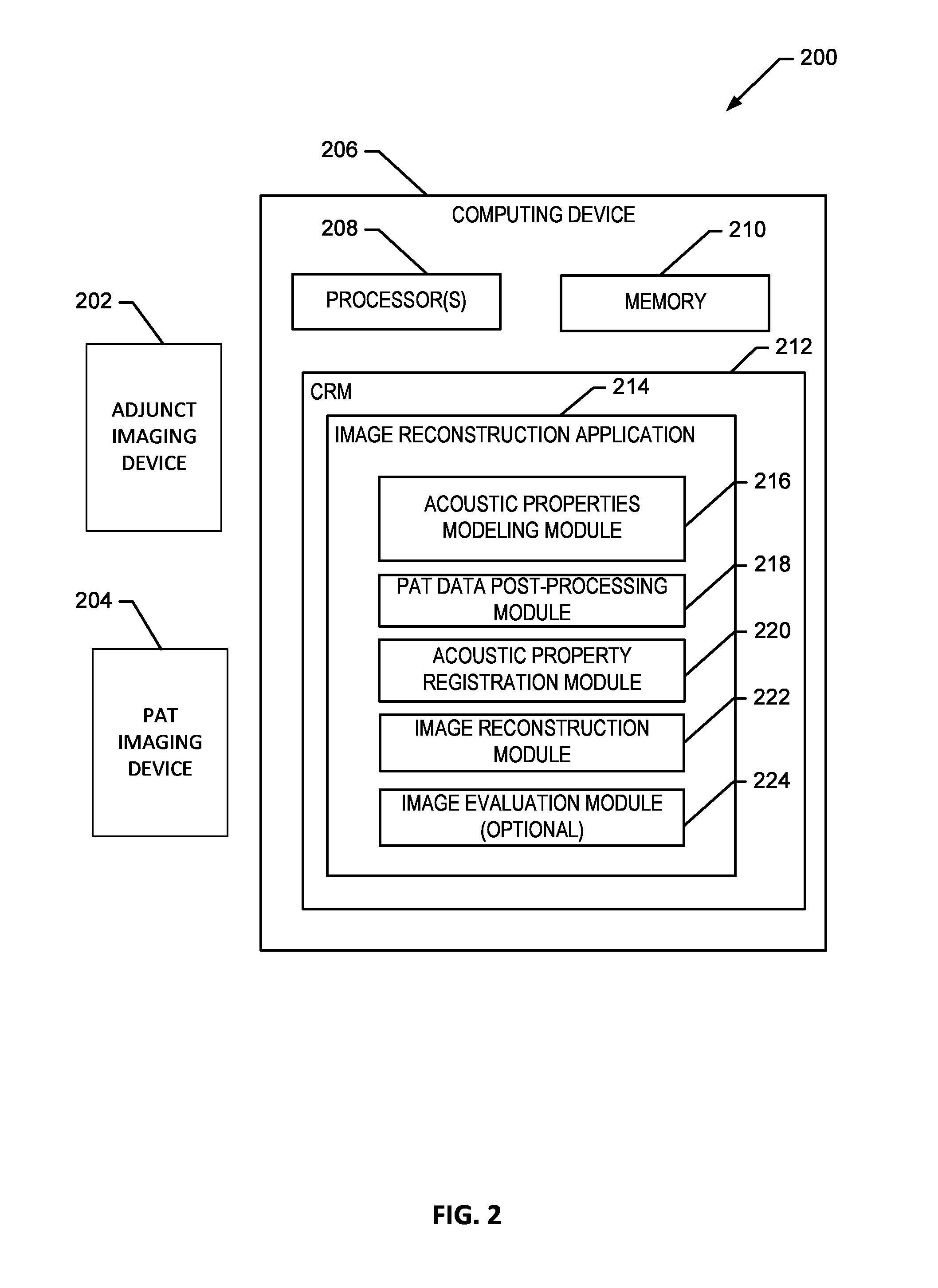Transcranial photoacoustic/thermoacoustic tomography brain imaging informed by adjunct image data
a technology of image data and brain imaging, applied in the field of system and method of brain imaging using adjunct image data, can solve the problems of inconvenient use of patients, high-resolution human brain imaging modalities such as x-ray computed tomography (ct) and magnetic resonance imaging (mri), and high cost of high-resolution human brain imaging modalities such as ct and mri
- Summary
- Abstract
- Description
- Claims
- Application Information
AI Technical Summary
Benefits of technology
Problems solved by technology
Method used
Image
Examples
example 1
Reconstruction of Biological Phantoms
[0128]The reconstruction methodology is comprised of two primary steps. First, the spatially varying SOS and density distributions of the to-be-imaged subject's skull are determined by use of adjunct X-ray CT data. These distributions are subsequently employed with the time-reversal image reconstruction method described above for estimation of p0(r) within the brain tissue from knowledge of the measured data {{circumflex over (p)}(rm, t)}m=1M.
[0129]Two biological phantoms that employed a monkey skull were employed in the experimental studies to demonstrate the effectiveness of the present methodology. The first phantom was the head of an 8 month old rhesus monkey that was obtained from the Wisconsin National Primate Research Center. The hair and scalp were removed from the skull. A second, more simple, phantom was constructed by removing the brain of the monkey and replacing it by a pair of iron needles of diameter 1 mm that were embedded in agar...
example 2
Images of Biological Phantoms
[0131]To accommodate the 2-D PAT imaging system and 2-D image reconstruction method, imaging phantoms were moved to the image plane, approximately 2 cm below the top of the skull. Note that this was not the plane in which the cortical vessels are normally found; the primate brain was moved to align the cortical vessels with the imaging plane. For in-vivo transcranial PAT applications in which the cortical structure is of interest, the geometry of the skull necessitates a full 3-D treatment of the image reconstruction problem. Additionally, accurate measurement of the transducer's electrical impulse response (EIR) and subsequent deconvolution of its effect on the measured data may further improve image reconstruction accuracy. Alternative reconstruction methods to the time-reversal image reconstruction method employed in this study may yield additional improvements in image quality.
[0132]Virtual point detectors were developed and applied for transcranial ...
example 3
Images of Needle Phantom
[0135]The reconstructed images corresponding to the head phantom containing the needles are displayed in FIG. 6. FIG. 6A displays the control image of the needles, without the skull present, reconstructed by use of a back-projection method. FIGS. 6B and 6C display reconstructed images of the phantom when the skull was present, corresponding to use of back-projection and the time-reversal reconstruction method utilized to estimate the SOS and density maps, respectively. All images were normalized to their maximum pixel value, and were displayed in the same grey-scale window. Due to the skull-induced attenuation of the high-frequency components of the PA signals, which was not compensated for in the reconstruction process, the spatial resolution of the control image in FIG. 6A appears higher than the images in FIGS. 6B and 6C. However, the image reconstructed by use of the time-reversal method in FIG. 6C contains lower artifact levels and has an appearance clos...
PUM
 Login to View More
Login to View More Abstract
Description
Claims
Application Information
 Login to View More
Login to View More - R&D
- Intellectual Property
- Life Sciences
- Materials
- Tech Scout
- Unparalleled Data Quality
- Higher Quality Content
- 60% Fewer Hallucinations
Browse by: Latest US Patents, China's latest patents, Technical Efficacy Thesaurus, Application Domain, Technology Topic, Popular Technical Reports.
© 2025 PatSnap. All rights reserved.Legal|Privacy policy|Modern Slavery Act Transparency Statement|Sitemap|About US| Contact US: help@patsnap.com



